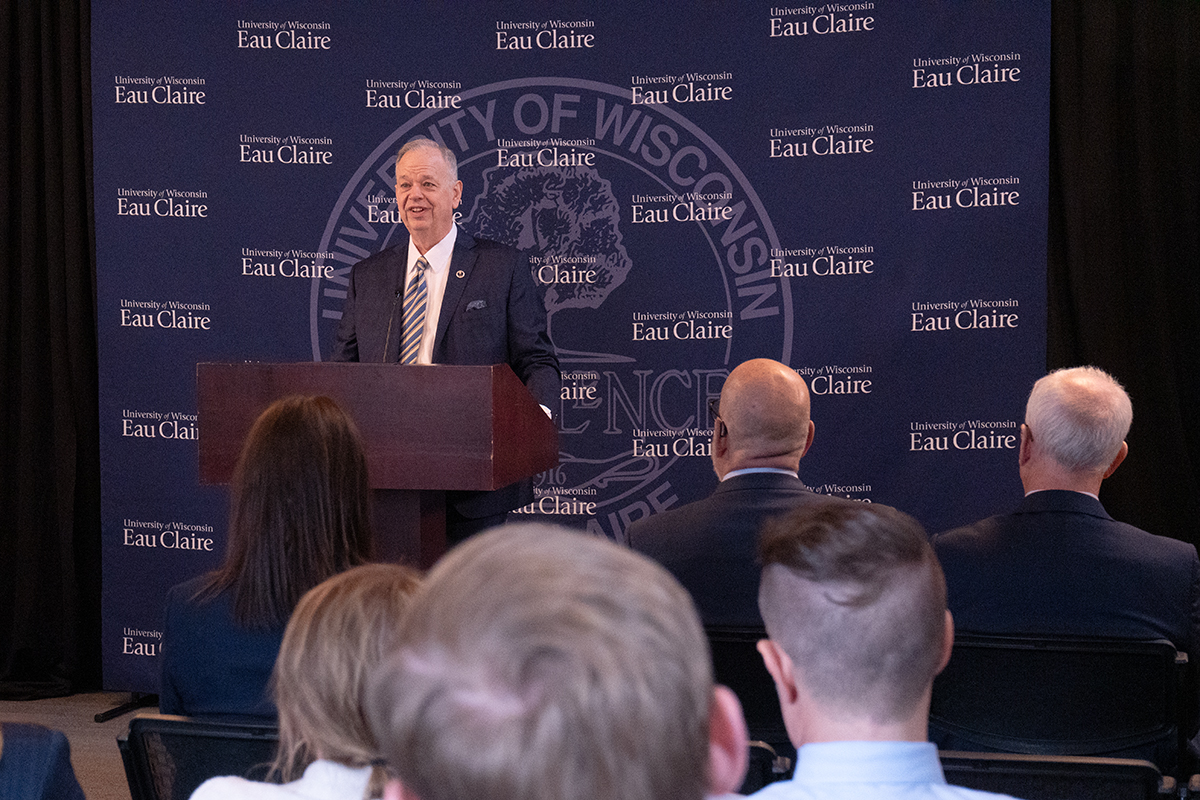 David Taintor
David TaintorThe composting program introduced this semester is the latest initiative in the university’s strategic plan to create a sustainable and eco-friendly campus.
A partnership between University Centers administration, Blugold Dining and such student groups as the Foodlums and the Conservationists has placed 10 composting bins in upper and lower campus cafeterias and food courts.
For the first few days, student volunteers and staff members hovered nearby the new bins to explain which items to compost, but now students are on their own, said Paula Stuettgen, a University Centers coordinator.
Freshmen Megan Schindeldecker and Hannah Gytri said they appreciate the signs above bins indicating exactly what’s compostable.
All of the serving ware – from the plates, to the cups, cutlery and drinking straws – are compostable, as well as any food scraps.
“It’s not that hard to separate your stuff .,” Gytri said, adding it seems most students have been catching on. “Every time I go to put something in, it seems pretty full.”
UW-Eau Claire is the first commercial composting site in Eau Claire, said Christian Wise, Blugold Dining’s general manager. Composting is a growing trend among other Wisconsin universities, many of which Campus Sustainability Fellow Kate Hale said are in various stages of implementing their own programs.
Students usually go through more than 5,000 cups each day, Wise said. That’s about 35,000 a week, and with 32 weeks in an academic year, that’s more than one million cups a year. Before this semester, Blugold Dining offered Styrofoam cups that Wise said take at least 100 years, sometimes 130, to fully decompose. Wise said the corn cups’ manufacturer, Sysco, claim the new cups biodegrade within a week.
“If you had two weeks of space to have your landfill, then that would be all you’d really need – as opposed to 120 years worth of landfill,” Wise said. “There’s a little bit of a difference there.”
Stuettgen said since the university is paying extra to use biodegradable serving wear, everyone should at least make the effort to compost.
The corn cups alone are about double the cost of the Styrofoam cups, Wise said.
Freshman Nick Paulson said he’s skeptical the extra cost is justified given the current state of the economy. Though he said he can’t predict the future, he thinks economics outweigh the environment’s needs.
“The environment seems to have held up so far and it doesn’t seem to be screaming in our face to get it fixed,” Paulson said.
For the most part, Blugold Dining has received positive feedback about the new program, Wise said. There have been a few “grumpy” e-mails, however, voicing doubt that the switch to composting has a large-scale impact.
“I guess you can believe that if you want to, I just believe it makes a difference,” Wise said.
Stuettgen said she’s excited for the initiative to better catch on among users, and also hopes the university will add more bins, specifically at Higherground, where there currently are none.
If there is not a composting bin, Stuettgen said students should throw serving ware in the trash and not in a recycling bin. That way cups can still decompose in a landfill, albeit more slowly than at a compost site.
Stuettgen said she has noticed students have been recycling corn cups that actually should be composted.
“It’s about time we started doing something,” said junior Michael Janowski. He composts and said the signs are pretty straightforward.
“It takes just a few seconds, but you do have to look at it and figure it out,” Stuettgen said. “We’re such a throw-away society; we’re just used to throwing it all in one place and getting rid of it.”
Wise said students haven’t been confused as much as they’ve been disrupted from their normal routine. Even though most students are in a hurry, Stuettgen said people have been genuinely trying to change their habits.






